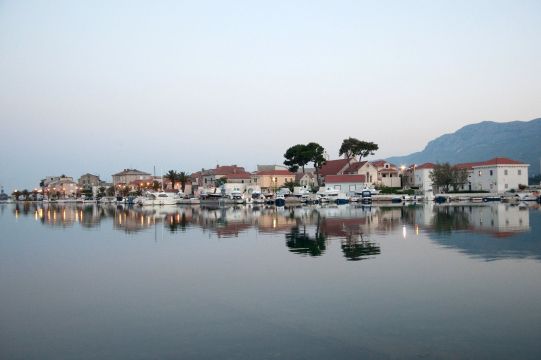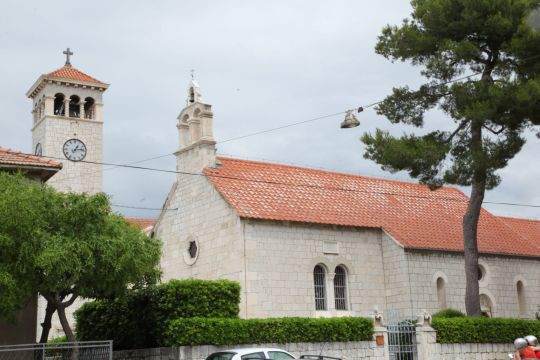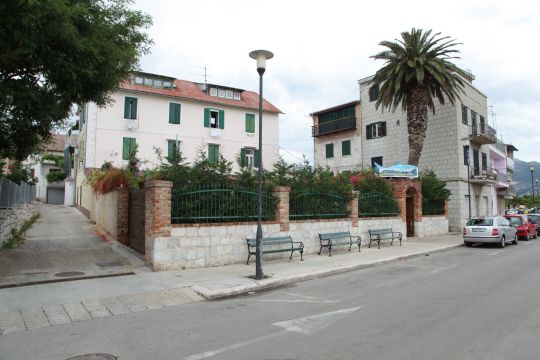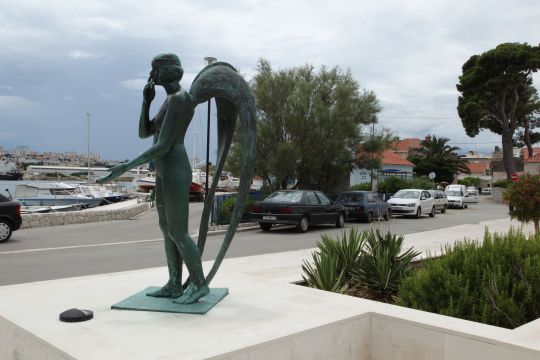The peninsula of Vranjic and the neighbouring lands were most probably inhabited as early as in prehistoric times. The present peninsula, initially an island, attracted people to settle there, the archaeological finds showing inhabitants’ presence since prehistoric and Roman times up until the present day. From the Roman times are, for instance, the remains of the port discovered during building oil tanks on the northern shore of the bay (explored by B. Kirigin and F. Oreb in 1976) and numerous stone monuments, inscriptions, grave stele, architectural decorative fragments, etc. Many of them are in the Archaeological Museum of Split today, and many more have been built into houses constructed at the end of the 19th and the beginning of the 20th centuries, as was traditional at the time. In the area of Crkvine, there are remains of an old-Christian basilica (5th-6th ct.) with A cemetery, possibly also the remains of a contemporary monastery, as it can be concluded from an inscription mentioning a monk named Peter.
There was a settlement there in the Middle Ages, too, related to the name Durana in a falsified document attributed to the Croatian King Krešimir II (about 950-960). The archdeacon of Split, Toma, mentions in his History of Solin Vranjic (naming it Hurania) as an island where there were both the mansion and lands of the archbishop of Split. The settlement, most probably, survived until the Venetian-Turkish wars, when the entire area of Solin was ravaged and laid to waste. A century and a half later, in the second half of the 17th and the beginning of the 18th centuries, the area of Vranjic, like most parts of the Solin Field, was colonised by immigrants coming from the continental part of Dalmatia, mostly from around Drniš, previously colonised in such deserted areas by the Venetian administration. The religious life was revived, too, and the St. Martin’s Church of Vranjic, for instance, became the parish church for Solin as well. It was reconstructed in 1729. The present church was rebuilt and enlarged in 1915 and 1928 respectively. Particularly important are the frescoes by J. Kljaković and V. Parać, painted at the time of its latest rebuilding.
In the second half of the 19th century, Vranjic achieved the appearance of the original plan for the place thanks to, among others, a group of intellectuals supporting the national movement, such as Petar Benzon, Rev. Luka Vušković and Rev. Frane Ivanišević, the parish priest of Vranjic and Solin. Two respected archaeologists and historians were born in Vranjic, too: the Rev. L. Jelić (1863-1922) and the Rev. F. Bulić (1846-1934). Both of them have contributed to the piecing together of the local history and, of course, on a much wider scale, that of Solin and Croatia. From this époque there are several valuable pieces of art showing Vranjic, painted by travelling artists, but of particular value are the five views of Vranjic by Emanuel Vidović of Split. However, that is of the time when Vranjic and the entire area of Solin were swamped by industrialisation that resulted in the building of, among others, concrete houses, fabrics, oil tanks, etc.
[Edit mode] Swiper Gallery: att Vranjic










